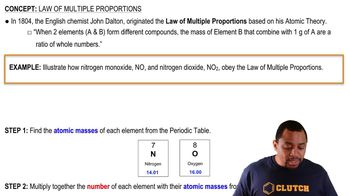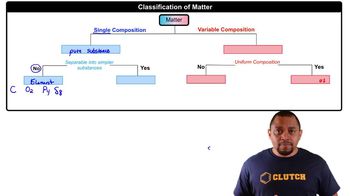Here are the essential concepts you must grasp in order to answer the question correctly.
Law of Multiple Proportions
The Law of Multiple Proportions states that when two elements form more than one compound, the ratios of the masses of one element that combine with a fixed mass of the other element can be expressed as small whole numbers. This principle helps to demonstrate that compounds can have different compositions while still being made of the same elements.
Recommended video:
Law of Multiple Proportions
Mass Composition of Compounds
Understanding the mass composition of compounds involves calculating the mass percentages of each element within a compound. In this case, knowing the masses of carbon and oxygen in carbon suboxide allows for the determination of their ratios, which is essential for applying the Law of Multiple Proportions.
Recommended video:
Empirical and Molecular Formulas
An empirical formula represents the simplest whole-number ratio of elements in a compound, while a molecular formula shows the actual number of atoms of each element in a molecule. By analyzing the mass data of carbon and oxygen in carbon suboxide, one can derive a possible empirical formula, which can then be used to suggest a molecular formula.
Recommended video:
Empirical vs Molecular Formula
 Verified step by step guidance
Verified step by step guidance

